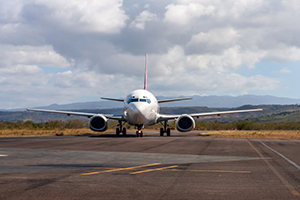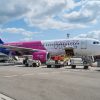 Despite the fact that aviation industry creates around 6.7 million jobs and $6.8B for African GDP, it still remains an area for concern. There are a lot of factors to blame for such a performance, including limited technology, poor policing, cumbersome airport fees and taxes on jet fuel (which are about 20% higher than elsewhere on the globe), as well as the lack of political will. Nevertheless, first and foremost in order to start moving forward, the region has to properly address its MRO capabilities in both short and long term perspectives.
Despite the fact that aviation industry creates around 6.7 million jobs and $6.8B for African GDP, it still remains an area for concern. There are a lot of factors to blame for such a performance, including limited technology, poor policing, cumbersome airport fees and taxes on jet fuel (which are about 20% higher than elsewhere on the globe), as well as the lack of political will. Nevertheless, first and foremost in order to start moving forward, the region has to properly address its MRO capabilities in both short and long term perspectives.
Currently African commercial aviation is a market with less than 400 aircraft. Nevertheless, one has to keep in mind that it has a huge population and major natural resources, allowing African economies to grow more than 5% in 2014 alone. Based on that, experts forecast that with the middle class on the rise over the next few decades the industry can achieve growth comparable to that of the Middle East, given, of course, it is managed correctly. At the same time, however, the continent’s safety record is still about eight times worse than enjoyed by any other of the five continents in the world, which makes improvements in the area a top priority.
“Political interference with technical aviation is widely regarded as one of the principal threats to aviation safety, be it in developed or less-developed markets. Therefore, to achieve the growth objectives, it is vital for African states to have effective and autonomous civil aviation authorities. Another challenge is increasing the pool of skilled and qualified maintenance labour, especially since more and more new aircraft models are introduced to replace the old ones, as the carriers grow their current fleets. Adding up to the issue is the brain drain affecting the future of African aviation. And then there are also numerous component logistics issues to address,” comments Aldas Juronis, the Head of FL Technics Components and Materials Sales Department.
Pressing challenges to developing appropriate aircraft maintenance capabilities in Africa include huge distances, sparse infrastructure and transferring parts between countries, especially since there are operations in remote Africa. Having tools and parts shipped into some areas is also very difficult because of many borders and different governmental policies, resulting in various customs obstacles. For instance, it may take several days to clear African customs, which naturally adds significantly to maintenance-related downtime during AOG situations. Meanwhile, Kenya charges a non-refundable railway tax of 17%, which has even resulted in a practice of shipping components to other areas to be installed.
“Currently much of the main drivers of African aviation MRO costs are component-related, creating many challenges, long delays and additional expenses. One of the possible solutions to this problem could be building up stock levels to mitigate the delays, enabling airlines to solve AOG situations rapidly and get the customers flying with minimal downtime,” states Aldas Juronis, the Head of FL Technics Components and Materials Sales Department. “At the same time, continuous challenges provide reasons to welcome new companies that might bring new solutions to old issues through strong relationships and constant examination of shipping problems. Much of these can be supplied by third-party providers that want to expand their operations on the continent. In any case, currently African aviation industry requires immense investments as well as a highly innovative and creative approach in order to tackle its problems and realize full potential.”





